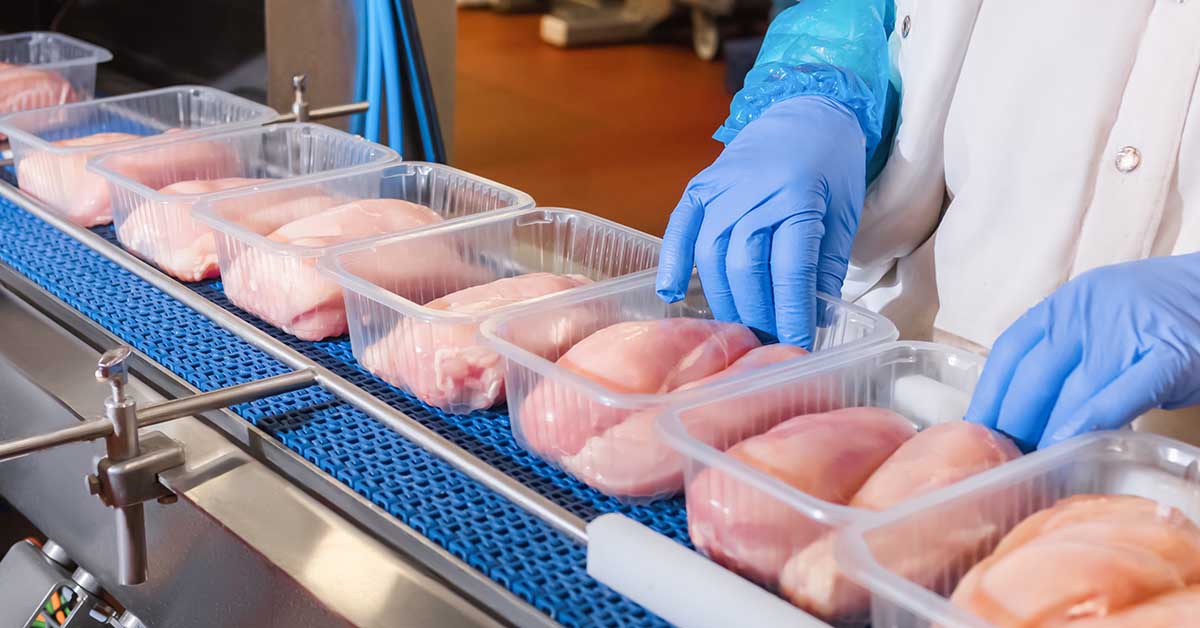

Validation trial for Blakbear Ltd’s freshness indicator
Opportunity
Blakbear Ltd produce sensors and associated cloud software that provide real-time data and shelf-life predictions, to enable quality control and food waste reduction.
When it comes to setting shelf-life, food and beverage manufacturers face conflicting pressures from the wants and needs of consumers (high-quality, fresher foods and clean labels), and the need to reduce food waste. The primary decision must always be one of food safety. When setting shelf-life, it is best practice to factor in a degree of ‘buffer’ to provide a margin of safety, account for imperfect storage conditions, and minimise the incidence of complaints.
As such, the shelf-life assigned to a product by its manufacturer may in some cases be cautious, with additional safe shelf-life potentially available. Once printed, use-by dates are fixed and cannot be adjusted, which presents a limitation in reflecting the actual freshness, which varies widely between individual packages.
Based on this premise, Blakbear Ltd has developed a sensor to measure real-time shelf-life data based on the breakdown of the product – measured by the sensor’s detection of spoilage gases such as ammonia. The idea of the sensor is to function as a freshness indicator for food manufacturers to use to support their shelf-life trials, alongside traditional / microbiological shelf-life testing, by using real-time sensor data from production through to retail.
Approach
On behalf of Blakbear, we conducted a trial, which focused on raw chicken breasts packed in a modified atmosphere. These were stored chilled for up to 15 days with a sensor in place inside each pack.
We performed gas analysis, microbiological testing and sensory assessment on the packs to help Blakbear Ltd to determine if the results from these measures (i.e. those used for standard shelf-life testing) matched the outputs of the sensors.
Results
The data that we gathered for Blakbear Ltd from our microbiological testing and sensory assessments of the chicken breast samples in this trial showed a strong correlation 0.90 with the sensor data supplied by Blakbear Ltd.
BlakBear’s mission is to expedite the transition away from fixed use-by dates, by bringing quality assurance to every package.
This is a significant challenge, but we’re happy to tackle it alongside innovative businesses like Campden BRI.”
– Max Grell, CEO, Blakbear Ltd
BlakBear technology is now available to producers and retailers in Europe and the US.
The Campden BRI difference
We take a holistic approach to shelf-life testing that provides insight into all aspects of the food. We can assess how your product performs over time and identify the changes to ingredients, packaging or to other contributory factors that will help maximise shelf-life across a variety of product types, to deliver results you can trust.
Using state-of-the-art facilities and the latest methods and technology, you can be sure of a high-quality service that will help you to improve your products, processes and profitability, whilst protecting product safety and quality.
We provide many members and clients with tailored, expert support in all areas of shelf-life evaluation, maximisation and extension, and have specific expertise in microbiology, chemistry, sensory, regulatory and product innovation services. Get in touch to join those already benefitting from support.
How can we help you?
If you’d like to find out more about shelf-life testing and maximising shelf-life, contact our support team to find out how we can help.
Are you a Campden BRI member who attends the MIG meetings?
- If not, you’re missing out on a whole host of exclusive benefits such as learning from industry-leading experts and networking with peers to overcome your challenges.






